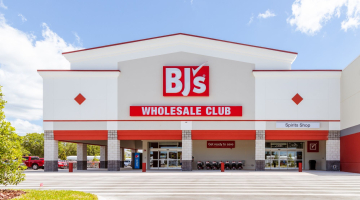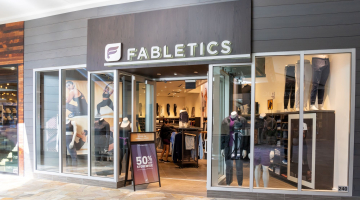
From left: Katherine Cullen of NRF speaking with Prama Bhatt of Ulta Beauty, Emily Erkel of LePrix and Christopher Thomas-Moore of Domino’s Pizza LLC at NRF Nexux 2023.
Having the data is one thing; being able to connect it along the entire journey, beyond a retailer’s four walls, is different altogether.
At NRF Nexus, a trio of leaders from Ulta Beauty, LePrix and Domino’s explored both possibilities and complexities related to personalization, relevancy, differentiation and generative AI. The conversation included Prama Bhatt, chief digital officer, Ulta Beauty; Emily Erkel, co-founder and CMO, LePrix; and Christopher Thomas-Moore, chief digital officer, Domino’s Pizza LLC. Katherine Cullen, vice president, retail and consumer insights, NRF, moderated.
Thomas-Moore, for one, warned the audience to not let anyone tell them personalization is easy to solve. “People will sell you on that,” he said.
But it’s not ever about “just add this one line of code to your website and, ‘Bam! It’s all personalized.’ It doesn’t work like that. It’s very challenging. It’s something that takes a lot of rigor — it takes a lot of practice, a lot of dedication to address it. But, to an earlier point, it all sits on the data. You’re really as good as the data is. You figure out what data you have, and then how you can orchestrate it to action.”
At Domino’s, Thomas-Moore said, it’s all about the small wins, “and we get there over time. It’s not like you push a button and everything is resolved.” His advice is to test into it, and learn what personalization really means to the brand.
Domino’s is fortunate, he said, in that it’s been in business for more than 60 years. There are nearly 100 million records of first-party data that can be leveraged to segment, target and speak directly to specific customers. Breakthroughs tend to be tied to points of tension for customers.
At Ulta Beauty, meanwhile, 95% of business comes from a loyalty member base that’s 41 million strong, as well as “active and engaged,” Bhatt said. The company’s disruptive approach includes high and low price points; a variety of categories such as makeup, hair and skin; and services.
“The combination of that, against our assortment strategy, against our physical experiences in-store and digital experiences, really leads to the differentiation,” she said.
Ulta Beauty’s category lends itself to being personal. Consumers are interested in newness, advice and solutions, Bhatt said, and the retailer is interested in putting experiences in place that provide those.
That includes the acquisition of various startups that allow for virtual try-on experiences. There have been “11-12 million users,” with return visits, higher conversion and more than 8 million shades tried on. There are also AI-powered quizzes and a skin analysis tool to provide product recommendations. And there’s help for those seeking the right shade of foundation.
“You win that customer in that journey, in that experience, you win them for a longer lifecycle,” Bhatt said.
As for LePrix, the largest business-to-business platform for retail to source preowned luxury, it considers itself an engine in the circular economy. It sits in an interesting space due to the amount of data. “Every luxury house has their own set of data and how they categorize it,” Erkel said. “It’s very fragmented.”
In the pre-owned space, there’s not that much data available at all. Data must be cleaned to be useful, and what comes to the platform may include only the brand and not the style or various attributes of an item. Data must be aggregated and organized, and the company is working on predictive technology that will be useful for the industry as a whole.
Use of artificial intelligence at LePrix has already made the team more efficient, Erkel said, and she foresees a variety of future use cases. “We know we are on the pulse of what’s happening in the pre-owned space.”


